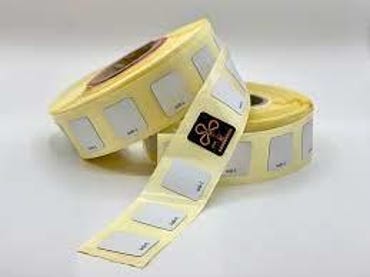The Internet of Things represents a massive expansion in the number of connected devices, but adding many of them to the network creates new challenges in terms of connected longevity, challenges that will require improving power consumption of many device components. A host of companies are wringing power consumption out of devices to the point where they can add intelligence and connectivity to products for which it has never been practical.
Morse Micro
W-Fi may have started out in the 2.4 GHz band, but its backers have been on a mission to extend it to wherever unlicensed spectrum can be found. Years after becoming entrenched in the 5 GHz range, the wireless standard is now rolling out in the 6 GHz bands. But not every move has achieved mass market penetration with Wi-Fi’s 60 GHz implementation (formerly WiGig) having made limited progress.
Also: Developer burnout and a global chip shortage: The IoT is facing a perfect storm
Morse Micro is one of the companies seeking to expand Wi-Fi to another part of the spectrum with Wi-Fi HaLow. Published by the Wi-Fi Alliance in 2017, Wi-Fi HaLow (aka 802.11ah) brings the standard to the 800 and 900 MHz bands. This can provide long range that extends well beyond the boundaries of a home, albeit at much slower speeds better suited to audio than 4K video transmission. HaLow competes with a number of other long-range WLAN approaches, including LoRaWAN, Sigfox and a few flavors of IoT-optimized cellular standards for LTE and 5G. However, Morse Micro says it believes multiple networks will coexist, and that other approaches may be better than HaLow for some application.
Willot

Wiliot Bluetooth tags
Bluetooth is already one of the more power-efficient standards in general use and is being tuned to sip even less juice with Bluetooth LE. But Wiliot has reached the Bluetooth efficiency endgame by eliminating the need for a battery altogether. Its sticker-mounted transmitters keep bits flowing by “harvesting” ambient radio signals in its immediate vicinity. The company is now shipping the second generation of its technology, with main applications including inventory tracking, where it competes with RFID, and relaying prescription information from a pill bottle label. Wiliot also sees its technology powering smart clothing in the future.
Rather than base its business model on sales or licensing of its stickers, though, Wiliot has made them part of a SaaS offering. The company recently partnered with Belgian health tech provider Blyott, a FileMaker Pro developer that has developed a system for tracking hospital assets using Bluetooth.
Perceive
Sensors are the intelligence-gathering foot soldiers of the IoT army, feeding immense amounts of data to components higher up in the value chain, such as edge or cloud computers presenting advanced analytics through sophisticated dashboards. But what if intelligence were embedded into the sensors themselves? That’s the pitch for Perceive (versus just “sense”), which aims to offset its battery consumption by making its devices behave more efficiently.
For example, instead of a surveillance camera indiscriminately slinging all of its video over a connection, one with a Perceive device could do on-board image analysis and relay only video segments that crossed a threshold of suspicious activity. We recently saw some evidence of this in Qualcomm’s XR1 smart glasses reference design; Qualcomm found that putting some processing in the viewer end reduced battery consumption even though most of their processing is offloaded onto a smartphone.
Speaking of which, Perceive claims that its AI processing performance compares favorably to those of the modules in the most efficient offerings from Qualcomm and Nvidia while using dramatically less power. Other low-power chip vendors, such as Ambiq and Greenwaves Technologies have focused on portable devices such as smartwatches and wireless earbuds respectively. It would not be surprising, though, to see the company take a turn toward entertainment-focused devices as it has been incubated within Xperi, the entertainment tech IP conglomerate that is home to DTS, IMAX, HD Radio, and TiVo.
PREVIOUS AND RELATED COVERAGE
What is the IoT? Everything you need to know about the Internet of Things right now
Updated: The Internet of Things explained. What the IoT is, and where it’s going next.
Developer burnout and a global chip shortage: The IoT is facing a perfect storm
A new report shows that IoT manufacturers need to revamp their development processes if they want to withstand the pressures of the next few years.
Meet 802.11ah: low powered Wi-Fi with greater range for the IoT market
IIt’s time to re-use that unlicensed 900 MHz spectrum from so many cordless phones of yesteryear.

